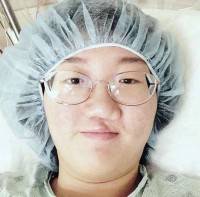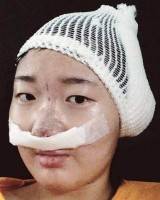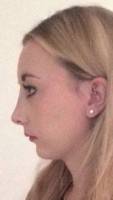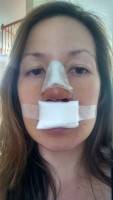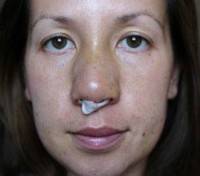Revision Rhinoplasty Vs Primary
When surgeons talk about rhinoplasty, we normally use three terms: Rhinoplasty or Primary Rhinoplasty – meaning the first “nose job” surgery for a patient.
These tend to be easier than other nasal surgery, as the anatomy is more predictable as it has never been touched or altered before.
Even if there was nasal trauma (a broken nose), all of the structural parts of the nose are present. Revision or Revisional Rhinoplasty – Strictly speaking, this is a “touch up” surgery done by the same surgeon who did the initial procedure.
This distinction is important, as this surgeon has the best idea of what is present inside the nose and what needs to be altered.
Even though we all take notes and dictate operative reports, slight individual differences in surgeon’s techniques could yield significantly different internal anatomy even if similar operative reports are dictated.
Nationally, surgeons have approximately a 15% revision rate on rhinoplasty surgery. This is due to the random aspects of scar healing as well as the perfectionist personalities of rhinoplasty surgeons.
Secondary Rhinoplasty – A revisional rhinoplasty done by a surgeon who was not the Primary Rhinoplasty surgeon. These are the most difficult and challenging cases to take on, as the surgeon has limited ideas of what structural components are present under the skin.
They could be opening Pandora’s box, and run the risk of not having enough structural components to put the nose back together.
Because of this, surgeons undertaking secondary rhinoplasty cases should be more experienced, have a broad knowledge base of surgical techniques (to be able to find good solutions to problems with limited cartilage), and comfortable using alternate sources of cartilage (ear or rib). Occasionally we refer to Tertiary or Quaternary rhinoplasty, or “re-do times 3, 4.” – but these are just more difficult versions of Secondary Rhinoplasty surgery, and are much more likely to need rib cartilage for reconstruction. (Michael A. Bogdan, MD, FACS, Dallas Plastic Surgeon)
Rhinoplasty revision refers to a subsequent rhinoplasty. A primary rhinoplasty would be the first one. Rhinoplasty revision usually implies that the patient has a problem form the first rhinoplasty or wants to improve on the first one. (Oleh Slupchynskyj, MD, FACS, New York Facial Plastic Surgeon)
Rhinoplasty Revision requires additional expertise
The term rhinoplasty implies surgical correction of the nose. Primary Rhinoplasty is the first time repair of the nose. Secondary Rhinoplasty is a rhinoplasty performed by a second surgeon after a first rhinoplasty.
Rhinoplasty revision is a rhinoplasty procedure performed by the same doctor to correct or revise the original work. 15-20% of rhinoplasties require some form of revision. (Robert M. Freund, MD, New York Plastic Surgeon)
Revision Rhinoplasty
Rhinoplasty revision means a repeat rhinoplasty. Typically it is done to either correct a minor deformity still present after the first rhinoplasty or if with time the nose changes shape and needs correction. Every operation after the first time is called a revision rhinoplasty. Another name is secondary rhinoplasty.
Like most other surgical procedures, first time (primary) rhinoplasty is the easiest as there is no scar tissue. In rhinoplasty revision the scar tissue has replaced some of the healthy normal well vascularized tissue. This makes the procedure more difficult and risky as well.
The risk of poor healing or complications is higher after revision rhinoplasty. (Tanveer Janjua, MD, Bedminster Facial Plastic Surgeon)
What is a Revision Rhinoplasty
The first rhinoplasty a person has is referred to as a primary rhinoplasty. Any rhinoplasty after that is called a revision or secondary rhinoplasty. Sometimes these names are used interchangeably but a rhinoplasty revision usually means the surgeon who did the first also did the second operation. Whereas, a secondary rhinoplasty is usually one which is performed by a surgeon who did not do the first surgery. (Jack P. Gunter, MD, Dallas Plastic Surgeon)
Rhinoplasty revision can be more challenging than a primary rhinoplasty
Rhinoplasty revision can be more challenging than a primary rhinoplasty. The major difference is that in a primary rhinoplasty the nose has not been operated on before and the tissues are much easier to work with and the results are more predictable. In a revision rhinoplasty, the nose has been operated on previously and there is significantly more scar tissue that has to be removed or repositioned in order to affect the type of changes that the patient wants with his/her nose.
It is a much more difficult procedure and should only be done by physicians with many years of experience in performing rhinoplasties and who have done a fair number of them since this procedure has less predictable outcomes that need to be accounted for when performing the procedure. (Scott Trimas, MD, Jacksonville Facial Plastic Surgeon)
Rhinoplasty revision addresses an instance when a nose has not healed properly from the original surgery or maintains residual deformities. Typically rhinoplasty revision requires cartilage to be harvested from the nasal septum and ear. These grafts are then utilized to reconstruct the defect that could be causing breathing difficulty and/or a visual cosmetic problem. Due to the unpredictability of secondary contraction of scar tissue and healing, the complexity of rhinoplasty revision is greater than the initial rhinoplasty and is still considered cosmetic by nature. (William Portuese, MD, Seattle Facial Plastic Surgeon)
Rhinoplasty revision is performed after first surgery
Rhinoplasty revision is any rhinoplasty performed after the first surgery. It can be done for persistent irregularities or for new deformities that result. Rhinoplasty revision can range from a simple in clinic procedure to extensive surgery requiring harvesting of ear or rib cartilage. It depends on what the goals are and what & how many rhinoplasties had been performed.
In our practice, we’ve found most revision referrals can be approached the same as a primary rhinoplasty, which often entails using an open approach. Experience and skill can successfully address the patient’s concerns. (Corey S. Maas, MD, San Francisco Facial Plastic Surgeon)
Revision Rhinoplasty corrects or improves results from a previous rhinoplasty
Revision rhinoplasty is an operation to correct or improve the results from a previous rhinoplasty. This means that the patient undergoing the procedure has has at least one or more prior rhinoplasties and is seeking to further change to their nose.
Because the nose has already been operated upon revision rhinoplasty poses some surgical challenges not present in a first time or primary rhinoplasty. As a result of the previous rhinoplasty or rhinoplasties, the basic anatomy of the nose has been changed.
There is also an element of scar tissue introduced from the healing of previous rhinoplasties that isn’t a factor in a primary rhinoplasty. The scar tissue further distorts the nasal anatomy adding to the difficulty of a revision rhinoplasty.
For the surgeons performing the revision this operation becomes almost an adventure particularly if they were not responsible for the previous rhinoplasties. (David A. Ross, MD, Chicago Plastic Surgeon)
Revision rhinoplasty is a second rhinoplasty procedure
The term ‘revision’ when referring to cosmetic surgery means a procedure which is a repeat of a previous procedure. In rhinoplasty, this means that a rhinoplasty has been performed before and it is the second, third, etc. procedure to be performed.
This is important because revision procedures mean that the original anatomy has been altered, scarring has occurred, and healing is not as predicatble.
Revision procedures in general are more difficult and results less predictable than primary or first time procedures. (D.J. Verret, MD, Dallas Facial Plastic Surgeon)
A revision rhinoplasty is a secondary procedure to fix deficiencies of the first operation.
Revisions are occasionally necessary for any procedure that a plastic surgeon performs. Revisions of the nose, however, can be difficult because of scarring and the delicacy of the structures of the nose. Needing a revision does not mean that the surgeon doing the initial nose procedure did a poor job. We all have results that can be made better by a secondary operation. (Vincent N. Zubowicz, MD, Atlanta Plastic Surgeon)
Revision rhinoplasty is when the surgery has been done prior
This is more than just another nosejob. Revision rhinoplasty requires more finesse and experience on the part of the surgeon. Results can be quite rewarding. However, sometimes improvements aren’t 100% due to scar tissue and cartilage “memory.” If properly prepared, most patients are happy with their results, though. (Steven J. Pearlman, MD, New York Facial Plastic Surgeon)
Revision rhinoplasty refers to the second rhinoplasty procedure
Rhinoplasty or nose reshaping is widely regarded as one of the most complex cosmetic surgical procedures. The surgeon must have sound surgical skills, a detailed knowledge of anatomy, and a wide range of techniques to treat various deformities. The first rhinoplasty performed is called the “primary” rhinoplasty. Due to the complex nature of this surgery the results may not be what the patient or surgeon had hoped for. The next or subsequent surgery on the nose is called a “revision” or “secondary” rhinoplasty. A revision rhinoplasty is generally more difficult than the primary procedure. The anatomy may be altered and the surgeon may be operating through dense scar.
In addition to these surgical challenges, the patient may have some psychological issues surrounding the first unsuccessful procedure. For revision surgery find an experienced surgeon so that you have the best chance to obtain a good result (Robert Mounsey, MD, Toronto Facial Plastic Surgeon)
Revision rhinoplasty is a completely different Rhinoplasty operation
Revision or secondary Rhinoplasty is a completely different operation than a primary Rhinoplasty. Usually, it is a much more difficult operation due to the scarring, distortion or lack of the original cartilage framework. As in primary Rhinoplasty-a never before done nose-is one of the most difficult operations done in plastic sugery, a revision or secondary rhinoplasty is even more challenging.
The key is to seek out a Board-Certified Plastic Surgeon that has significant experience and expertise in Secondary Nasal Surgery to improve your chances for a successful outcome. (Rod J. Rohrich, MD, Dallas Plastic Surgeon)
A revision rhinoplasty is the name for a “nose job” procedure performed on someone who has has a rhinoplasty in the past.
It is performed to correct / improve the appearance of the nose and/or correct problems with breathing (nasal obstruction) that can arise from some rhinoplasty surgery. V
iew the link below for a comprehensive information source about revision rhinoplasty with photos. (Jacob D. Steiger, MD, Boca Raton Facial Plastic Surgeon)
Rhinoplasty is a cosmetic nasal surgery. It is termed “primary” when it is the first surgery. If the patients desires a second operation to correct or improve upon the first result it is termed revision.
Revision rhinoplasty tends to be a more complicated procedure most of the time and the difficulty depends on the severity of the deformities acquired from the previous rhinoplasty.
Occasionally, the revision is minor, and the procedure is short and simple. (Andres Bustillo, MD, FACS, Miami Facial Plastic Surgeon)
Revision rhinoplasty refers to rhinoplasty (nose surgery) that is performed on a patient who has had a previous rhinoplasty.
In contrast, a primary rhinoplasty refers to a first time nose job.
Revision rhinoplasty or redo nose jobs may be performed because the patient doesn’t like the look of their previously operated nose, or that they can’t breath well through their nose, or both.
There are entire books written on revision rhinoplasty, but in short that is what it is. Hope that clarifies things for you. (A. John Vartanian, MD, Glendale Facial Plastic Surgeon)
Revision Rhinoplasty
Revision rhinoplasty is a cosmetic nose shaping procedure done after one has already been done before. A revision rhinoplasty is just a procedure that is done to improve on the rhinoplasty that was done originally. This occurs at a certain rate with all surgeons. Many surgeons use this as a gauge to determine how facile they are with rhinoplasties. The lower rate of revision the better. No surgeon has a 0% rate of revision. If any surgeon tells you that, he is most definitely not telling the whole truth. Even the very best rhinoplasty surgeons I know, or at least are the deemed the best by their peers, have a revision rate that doesn’t get much lower than 10%.
Rhinoplasty is a very hard procedure and revisions are a necessary part of the process but vital in ensuring the very best result in the end. (Philip Young, MD, Bellevue Facial Plastic Surgeon)
Revision rhinoplasty definition
A revision rhinoplasty is a rhinoplasty that is done a second time. After the first operation (a primary rhinoplasty), an unsatisfactory result might require additional surgery – a secondary or revision rhinoplasty. (Howard T. Bellin, MD (retired), Manhattan Plastic Surgeon)
Revision rhinoplasty refers to rhinoplasty (nose surgery) that is performed on a patient who has had a previous rhinoplasty. In contrast, a primary rhinoplasty refers to a first time nose job. Revision rhinoplasty or redo nose jobs may be performed because the patient doesn’t like the look of their previously operated nose, or that they can’t breath well through their nose, or both. There are entire books written on revision rhinoplasty, but in short that is what it is. Hope that clarifies things for you. (A. John Vartanian, MD, Glendale Facial Plastic Surgeon)
Revision Rhinoplasty is a second Nose Job
Revision rhinoplasty is a rhinoplasty performed a second time after healing from a first nose surgery. The reason why it is usually performed is that a patient wants a different look, or there are irregularities after the first surgery. Revision rhinoplasty surgery is more difficult than primary and patients should seek a doctor who specializes in revisional surgery for best outcomes. (Andrew Jacono, MD, Great Neck Facial Plastic Surgeon)
